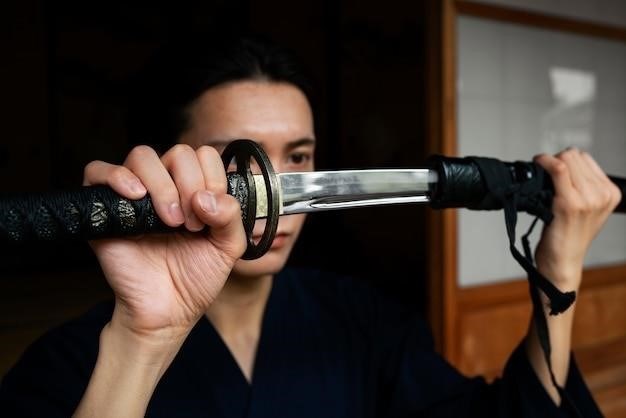Shibari Tutorials⁚ A Comprehensive Guide
Welcome to the world of Shibari, a captivating art form that blends intricate ropework with sensual exploration. This guide will equip you with the knowledge and skills to safely and confidently navigate the realm of Shibari. From fundamental knots to advanced techniques, our tutorials will provide a comprehensive journey into this alluring art form. Whether you’re a curious beginner or a seasoned practitioner, we aim to inspire your creativity and deepen your understanding of Shibari.
Introduction to Shibari
Shibari, also known as Kinbaku, is a captivating art form originating from Japan, where it’s deeply intertwined with tradition and aesthetics. It involves the use of rope to create intricate and beautiful restraints, often incorporating a range of knots and techniques. Shibari transcends simple bondage, embracing a more artistic and nuanced approach. It’s about exploring the interplay of tension, release, and intimacy, creating a unique sensory experience for both the person being tied and the person tying. Shibari goes beyond mere physical restraint; it’s about fostering a deeper connection between partners, encouraging trust, communication, and a shared exploration of boundaries.
Shibari is not just about the knots and ties; it’s about creating a space of vulnerability and intimacy that fosters deep connections. It’s about understanding and respecting your partner’s emotional well-being and ensuring a safe and enjoyable experience.
While Shibari can be incorporated into sexual play, it’s important to remember that it’s primarily an art form. It’s about the beauty of the ropework, the elegance of the ties, and the exploration of trust and connection.
This guide will provide you with a comprehensive introduction to Shibari, guiding you through its history, techniques, and safety considerations. We’ll cover everything from basic knots to advanced techniques, helping you develop your skills and unleash your creativity in this fascinating art form.
Safety First⁚ Understanding Shibari Risks
While Shibari can be an incredibly enjoyable and fulfilling experience, it’s crucial to prioritize safety. Like any form of restraint, Shibari involves inherent risks if not performed correctly. Understanding these risks and implementing proper safety precautions is paramount to ensuring a positive and enjoyable experience for both partners.
One of the primary risks associated with Shibari is the potential for injury due to improper knotting or excessive tension. Inadequate knotting can lead to slippage, potentially causing discomfort or even injury. Similarly, applying too much pressure can restrict blood flow or cause nerve damage. This is why it’s essential to learn the correct techniques and practice them diligently before attempting more complex ties.
Communication is also key to safety. Both partners need to be comfortable expressing their limits and any discomfort they experience. It’s important to have a safe word or signal to halt the activity if things become too intense or painful. Open communication fosters trust and helps prevent accidents.
It’s also essential to choose the right rope for Shibari. Natural fibers like cotton or hemp are generally preferred because they’re softer and more forgiving than synthetic materials. The thickness of the rope should also be considered, as thicker ropes can create more pressure;
Finally, always remember that Shibari should never be forced or coerced. Both partners must consent to the activity and feel comfortable with the level of restraint involved. A safe and enjoyable Shibari experience requires mutual trust, respect, and open communication.
The Basics of Shibari Knots
Shibari knots are the foundation of this captivating art form, and mastering them is essential for creating safe, comfortable, and aesthetically pleasing ties. While there are countless knots used in Shibari, a handful of essential knots serve as building blocks for more complex techniques.
The “Gote” knot is a fundamental Shibari knot that forms the basis of many chest harnesses and arm ties. It’s a simple yet versatile knot that allows for a secure and adjustable hold. Another essential knot is the “Shibari Loop,” which is a basic loop knot that can be used to create various ties, including ankle and leg ties.
Understanding how to tie a “Double Column Tie” is also crucial. This knot creates a strong and stable tie that can be used for both wrists and ankles. It’s a versatile knot that can be modified to create different levels of tightness and restraint.
The “Single Column Tie” is another important knot used in Shibari. It’s a simpler knot than the double column tie, but it can still be used to create strong and secure ties. It’s often used for arm and leg ties, as well as for creating simple chest harnesses.
Learning these basic knots will provide you with a solid foundation for exploring more advanced techniques. As you gain experience, you can incorporate other knots and variations to create unique and intricate ties. Remember, practice is key to mastering Shibari knots and achieving the desired aesthetic and comfort for your partners.
Essential Shibari Gear
Before embarking on your Shibari journey, it’s essential to gather the right tools. Investing in quality gear not only ensures safety but also enhances the overall experience. The cornerstone of Shibari is, of course, the rope.
Natural fibers like cotton or hemp are favored for their softness and comfort against the skin. Choose ropes with varying thicknesses to create different textures and sensations. Additionally, consider the length of the rope, as different techniques require varying lengths.
Protective gear is essential for both the person being tied (the Sub) and the person tying (the Dom). Padding for sensitive areas like wrists, ankles, and knees is vital to prevent discomfort or injury.
A comfortable surface to work on is also crucial. A padded mat or thick blanket can provide cushioning and prevent slipping. Good lighting is also important for visibility and to ensure proper knot placement.
Finally, a dedicated space for practicing Shibari can be invaluable. This space should be free from distractions and clutter, allowing for focus and concentration during your sessions. By investing in these essential pieces of gear, you’ll create a safe and enjoyable environment for exploring the art of Shibari.
Shibari Techniques for Beginners
Starting your Shibari journey requires mastering fundamental techniques that build a solid foundation for more complex creations. Begin with simple knots like the “overhand knot” and the “figure-eight knot.”
These knots provide a secure base for building upon. Practice tying these knots on different parts of the body, starting with wrists and ankles. Focus on achieving a comfortable and secure fit while avoiding excessive pressure.
Explore basic tie variations like single column ties and double column ties. Single column ties involve a single line of rope passing around a limb, creating a simple and elegant restraint. Double column ties use two parallel lines of rope, offering greater stability and versatility.
Learn to create basic chest harnesses, which serve as a foundation for more intricate body ties. These harnesses provide support and security while allowing for a range of decorative options.
As you gain confidence, experiment with different rope placements and knot combinations. The key is to practice consistently and develop a feel for the rope. Remember, safety is paramount. Always tie with care and communicate clearly with your partner to ensure comfort and enjoyment throughout the experience.
Shibari Tutorials for Different Body Parts
Shibari offers a vast array of techniques for tying different body parts, each with its unique aesthetics and challenges. This section delves into specific tutorials for various areas of the body, allowing you to explore the versatility of Shibari.

Learn how to tie secure and comfortable wrist and ankle ties. These are fundamental techniques that serve as the base for many complex binds. Mastering these techniques will provide you with a solid understanding of rope placement and tension.
Explore tutorials for leg and foot ties, including techniques like heel ties, ankle ties, and leg-binding ties. These ties offer a range of options for restricting movement and creating visually captivating patterns.
Discover the art of tying hair and face ties. These techniques require delicate precision and careful attention to detail. Learn how to create secure and comfortable hair ties that add an element of sensuality and elegance to your Shibari practice.
Dive into tutorials for chest harnesses, which provide a secure and supportive foundation for a variety of body ties. Explore techniques for creating different harness styles, including single column harnesses, double column harnesses, and decorative harnesses.
Finally, explore tutorials for hip and waist ties, which add a unique dimension to Shibari. These techniques offer a range of possibilities for creating visually striking and comfortable restraints.
Advanced Shibari Techniques
Once you’ve mastered the fundamental knots and basic body ties, you can delve into the world of advanced Shibari techniques. These techniques involve more intricate knotwork, creative rope placement, and a deeper understanding of tension and pressure distribution.
Explore tutorials on suspension techniques, which involve using ropes to elevate the body in a controlled and safe manner. These techniques often involve intricate knotwork and require a thorough understanding of weight distribution and proper anchoring.
Learn about techniques for creating complex harnesses and body wraps. These techniques often involve combining multiple knots and creating intricate patterns that flow seamlessly across the body. They require a high level of skill and precision.
Dive into the world of decorative weaves and embellishments. These techniques involve using ropes to create artistic patterns and designs on the body. They offer a unique opportunity to express your creativity and add a touch of artistry to your Shibari practice.
Finally, explore tutorials on advanced knotwork, including techniques like the “Gote Shibari” and the “Strappado.” These techniques require a deep understanding of knot theory and the ability to manipulate ropes with precision and control.
Shibari Styles and Variations
Shibari, while rooted in traditional Japanese techniques, has evolved into a diverse art form with various styles and variations. Each style offers a unique aesthetic and approach to ropework, reflecting the creativity and individual preferences of practitioners.
Explore the “Gote Shibari” style, known for its elegant and symmetrical chest harnesses that often incorporate intricate decorative weaves. This style emphasizes a balanced and aesthetically pleasing presentation of the ropework.
Delve into the “Futomomo” style, which focuses on binding the legs, often creating a sense of both restriction and sensual appeal. This style is known for its powerful and visually striking aesthetic.
Discover the “Chaotic Shibari” style, which embraces a more spontaneous and less structured approach to ropework. This style often involves a mix of knots and techniques, creating a dynamic and unpredictable visual experience.
Learn about “Suspension Shibari,” which utilizes ropes to elevate the body, often creating a sense of weightlessness and vulnerability. This style requires a high level of skill and safety awareness.
Beyond these distinct styles, Shibari practitioners often incorporate their own personal touches and variations, resulting in a wide range of creative expressions. Explore different styles and techniques to discover your own preferred aesthetic and approach to this art form.
Shibari Resources and Communities
The world of Shibari is vibrant and welcoming, with a wealth of resources and communities dedicated to fostering learning and connection. From online platforms to in-person workshops, there are numerous opportunities to deepen your knowledge and connect with fellow practitioners.
Online platforms like Shibari Study offer a comprehensive library of tutorials, covering everything from basic knots to advanced techniques. These platforms often provide access to live classes, expert instructors, and a supportive online community.
Websites like Crash Restraint and Rope Study provide free online courses in Shibari, offering a beginner-friendly introduction to the art form. These resources can be a valuable starting point for those new to Shibari.
Social media groups and forums dedicated to Shibari offer a space for sharing knowledge, discussing techniques, and connecting with others who share a passion for this art form. These online communities provide a valuable platform for learning and inspiration.
Local Shibari workshops and retreats provide a chance to learn from experienced instructors, practice your skills, and connect with other practitioners in person. These events offer a unique opportunity to immerse yourself in the world of Shibari and build lasting connections.
By exploring these resources and communities, you can tap into a wealth of knowledge, inspiration, and support as you embark on your Shibari journey.
Shibari Etiquette and Communication
Shibari, as a form of intimate and trust-based play, thrives on clear communication and respectful etiquette. Open and honest dialogue are paramount for ensuring a safe, enjoyable, and consensual experience for both partners.
Before engaging in any Shibari practice, it’s crucial to establish clear boundaries and preferences with your partner. Discuss your comfort levels, pain tolerance, and any specific requests or limitations. This open communication fosters a sense of trust and mutual understanding, ensuring a positive and fulfilling experience.
Throughout the session, maintaining open and honest communication is essential. Regularly check in with your partner to ensure their comfort and well-being. Use clear and respectful language, and be mindful of your partner’s verbal and nonverbal cues. If at any point your partner expresses discomfort or requests a change, immediately respond with understanding and respect.
After the session, take time to debrief with your partner. Discuss your experience, acknowledge any areas for improvement, and reiterate your commitment to safe and respectful practices. This open communication helps foster a stronger connection and ensures a positive and fulfilling experience for both partners.
By embracing these principles of communication and etiquette, you can cultivate a safe, respectful, and enriching Shibari experience that celebrates trust, intimacy, and mutual pleasure.
Shibari for Beginners⁚ A Step-by-Step Guide
Embarking on your Shibari journey can be both exciting and a little daunting. This step-by-step guide will provide you with a solid foundation to confidently explore the art of rope bondage. Remember, safety and communication are paramount, so take your time, practice patience, and prioritize your partner’s well-being.
Choose Your Rope⁚ Begin with a soft, natural fiber rope like cotton or hemp. These materials offer a comfortable and secure grip, while avoiding harshness on the skin. Select a rope thickness suitable for your partner’s size and comfort level.
Master Basic Knots⁚ Start with fundamental knots like the overhand knot, figure-eight knot, and square knot. Practice these until you can tie them quickly and confidently. These knots will form the foundation for more complex Shibari techniques.
Practice on a Soft Surface⁚ Initially, practice your knots on a pillow, stuffed animal, or a rolled-up towel. This allows you to refine your technique without the pressure of working on a human body.

Communication is Key⁚ When practicing on a partner, ensure clear communication and consent. Use gentle pressure and consistently check in with your partner to ensure their comfort.
Start with Simple Ties⁚ Begin with basic ties like single column ties, double column ties, or basic arm restraints. These ties provide a solid foundation for building more intricate techniques.
Seek Guidance⁚ Numerous online resources, books, and courses offer detailed tutorials and guidance on Shibari techniques. Explore these resources to expand your knowledge and refine your skills.
Practice Patience⁚ Mastering Shibari takes time and practice. Don’t be discouraged if you encounter challenges along the way. Embrace the learning process and celebrate your progress.
Remember, Shibari is a journey of exploration and discovery. Embrace the process, prioritize safety and communication, and enjoy the artistry of rope bondage.
Shibari Inspiration and Ideas
The beauty of Shibari lies in its endless possibilities for creative expression. Beyond the technical aspects, Shibari offers a platform for artistic exploration and personal interpretation. To spark your imagination and fuel your creative drive, here are some sources of inspiration for your Shibari journey.
Visual Arts⁚ Explore the world of art for inspiration. Draw inspiration from sculptures, paintings, and photographs that depict forms, textures, and patterns. Consider how these elements can translate into your Shibari designs.
Nature⁚ Nature is a rich source of inspiration. Observe the intricate patterns in spiderwebs, the elegant curves of branches, or the graceful flow of water. These natural forms can guide your ropework, creating visually stunning and organically flowing ties.
Fashion and Textiles⁚ Explore the world of fashion and textiles. Look at intricate lacework, elegant fabric draping, and unique garment designs. These concepts can inspire your Shibari creations, incorporating textures, patterns, and visual elements into your ropework.
Architecture and Design⁚ Examine architectural structures and interior design elements. Notice the interplay of lines, angles, and curves. These principles can translate into your Shibari ties, creating visually intriguing and structurally sound designs.
Other Bondage Styles⁚ Explore different bondage styles, such as Kinbaku, Shibari, and Western bondage. Observe the techniques and aesthetics of each style, and consider how you can incorporate elements into your own practice.
Remember, Shibari is a collaborative art form. Engage in open communication with your partner, allowing their preferences and desires to shape your creative vision. Embrace the journey of discovery and let your imagination guide you to create unique and captivating Shibari experiences.



